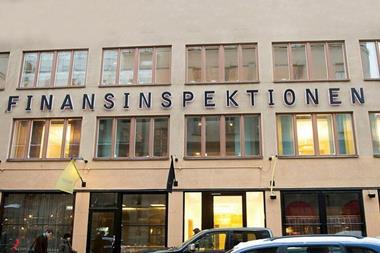Central and eastern Europe (CEE) offers fantastic opportunities for real estate investors over the next decade as economic growth is expected to outpace that in western Europe, and the market continues to become more transparent. However, this positive scenario is not without risk. As an investment class, property is becoming thoroughly international. National borders are starting to dissolve, and it appears that there is a willingness to accept similar return criteria across much of mainland Europe almost irrespective of the differences in market maturity.
You might well have recently invested in Prague, Budapest and Tallinn, where some investors have been willing to receive income returns of around 6.75% for offices and 6.6% for retail. The more courageous capitalists are going even further, to Bucharest, Kiev or St Petersburg, where competition for product is reputedly lower, growth potential is described as massive and recent GDP increases of more than 4% are helping to make the case nicely.
While the ‘new Europe’ euphoria is carrying some people away, it’s worth keeping in mind that there are very appealing opportunities in provincial western Europe at virtually the same pricing but with significantly lower risks. Sometimes one tends to forget that Antwerp’s population is bigger than Bratislava’s and Hamburg’s bigger than Budapest’s. The degree of economic activity is very high and stable.
Some people, however, prefer to invest in Estonia’s capital Tallinn, whose total population is lower than that of the metropolitan area of Marseille alone.
Such pioneers are getting into a highly ‘emerging’ leasing market, where specification rather than location becomes the key driver. Indeed, you might get the nicest office building in town when you buy, but the office central business district (CBD) has not even been clearly defined. At your exit point, you might well find yourself outside the main office cluster if the CBD turns out to arise on the other side of the city.
Similar situations can occur in the retail and industrial sectors – if new infrastructure is not yet in place, how do you know if your logistics centre (bought at a prime price) is going to be in the hot spot?
Emerging leasing markets imply future rental falls. Prime office rents in Moscow are currently higher than in the CBD of Paris because of a lack of prime stock. A rental fall is inevitable as new supply comes into the market attracted by high rents.
Compare this with Marseille, Turin or Rotterdam. The office markets are established. If you buy the best office building in the city centre you are sure you are in the hot spot. Prime yields in Turin are only 100 basis points lower than in Prague. In Marseille they are actually higher.
Take retail, where the comparison becomes even more overwhelming. Bologna has a similar population to Vilnius and nearly three-times its total purchasing power: yet total shopping centre supply in Vilnius is close to 500,000m2, whereas in Bologna it is 250,000m2.
But pioneer investors in eastern Europe are not entirely alone in failing fully to grasp the political and economic risks of their actions. Bulgaria, for example, has been cited by the European Commission for its rampant corruption at all levels, from politics to the judiciary. This might hamper its projected acccession to the EU in 2007. And Bulgaria is by no means the only country in which such issues arise. Investors should be cautious in their decisions until a country succeeds in overcoming corruption in its systems. Political risks have a direct impact on the true cost of doing business. Do you make provision for that? You need to overcome bureaucracy, create corporate structures, appoint management and so on. We estimate that the cost of doing business in CEE is three times higher than in the UK.
On the economic side, current prosperity makes us forget the (sometimes very recent) past. Turkey’s stability comes after a period of annual inflation of more than 50%. And Russia’s government defaulted as recently as 1998, affecting global securities markets.
Proponents of investment in the region might argue that this is the past and that the future is bright and rosy. That is probably true if you take the current point in time and project a reasonable average growth rate over a 30-year period. However, you would be ignoring the huge stretches of volatility in the interim. Low volatility in France, the Netherlands or Germany caused fewer surprises, more limited downside risks, no hyperinflation and less potential for political turmoil.
Currency risk is an old friend, and the pioneers might argue that they are avoiding it because rents are paid in euros or dollars. Do not forget, however, that most tenants are trading in zlotys or levs. They are, effectively, transferring the currency risk to the tenant and thus increasing the tenant’s exposure to currency fluctuations and a default risk. In most of provincial western Europe, however, rents are paid in euros and tenants trade in euros.
Another issue is growth. One might think that the higher the salaries in CEE, the higher the revenues enjoyed by an investor’s retail and industrial tenants. This could be a double-edged sword. At the moment, labour costs in these countries are low, so tenants are able to spend a large part of their revenue on rents. As labour costs increase, a higher proportion of tenants’ costs will be devoted to them. This might be largely offset by revenues but it will depend on whether their location is right. The increase in cost is guaranteed to occur, but the increase in revenue is only likely to do so.
In provincial western Europe the opposite is true. Labour costs are a higher proportion of revenues than in CEE. The risks of them getting higher relative to turnover are almost negligible. Indeed, if labour reform gathers momentum, the percentage might well be lower.
Finally, there is the question of planning. CEE city councils, eager to improve their tax collection, might be inclined to encourage excessive development. Supply risks are therefore much higher. Estonia already enjoys higher shopping centre density than the EU average, and Hungary, Poland and the Czech and Slovak republics are catching up.
Warsaw alone hosts more shopping centre density than Frankfurt, Hamburg or Barcelona. In western Europe, the main reason why retail enjoys lower vacancy than offices or industrial is the constraint on new supply imposed by planning authorities. In this region it is largely understood that a planner’s job is to preserve the integrity of a city.
No investment is without risk. As long as these risks are adequately priced, I would encourage investors to venture into CEE markets. But don’t get dragged into the frenzy – prudence is key.












No comments yet